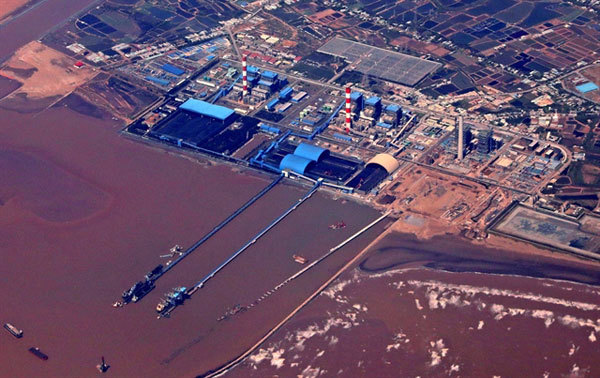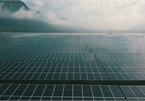 |
|
Duyen Hai Thermalpower Plant in Tra Vinh Province.
|
One of the key solutions proposed by the Ministry of Industry and Trade to reduce the risks of electricity shortage is to promote renewable energy like wind and solar power. Do you think this is a feasible plan?
In recent years, developing wind and solar power aims to encourage renewable energy. Renewable energy has attractive prices, for example, solar power has feed-in-tariffs (FIT) of 9.35 US cents per kWh.
Renewable energy brings a lot of environmental benefits. Because of preferential prices, private investors have poured investment into renewable energy.
According to the power master plan, several imported coal-fired power plants in the south and some gas power plants in the southwest have been behind schedule and delayed their operations in 2019 and 2020. Although wind and solar power are not as stable as coal-fired and gas power, renewable energy will still make contributions to addressing power shortages.
The new FIT rate is 7.69 US cents per kWh for floating solar power projects; 7.09 US cents per kWh for ground-mounting solar panels and 8.38 US cents per kWh for roof-top solar power. These prices are lower than the previously-applied price (9.35 cents). Are they attractive enough for solar power investors?
9.35 US cents per kWh is such an attractive FIT rate. Investors can still make profits from the new rates. However, they must make more careful calculations. The Government has also offered other incentives such as low banking interest for enterprises that invest in renewable energy.
I think that rooftop solar panels should be encouraged. This type of solar power does not require a loading grid of 500kV or 220kV. The investment in rooftop solar power does not need to be too big.
Besides renewable energy, importing electricity from China has also been proposed by the Ministry of Industry and Trade to make up for power shortages in the next few years. What do you think about this?
Vietnam is short of power in the southern region, not in the north.
The north transmits power to the south. If we import power from China, the north will have to increase its loading transmission to the south.
I think instead of importing from China, we should import power from Laos because wind and solar power from Laos are cheaper than in Vietnam.
All coal-fired power plants in the 2011-20 power planning list have been delayed, resulting in future power shortages. What changes need to be made in the post-2020 power planning to avoid similar mistakes?
The Government has assigned energy corporations to generate power. For example, the Vietnam Oil and Gas Group (PVN) has been assigned to create not only gas but also coal-fired power.
The Government should not assign corporations to implement energy projects which are not their strengths. For example, gas corporations should implement gas power projects only. Those specialising in coal should produce coal-fired power only.
The key point to avoid delayed projects is to strengthen supervision. The Ministry of Industry and Trade should establish a steering committee to supervise power projects’ progress and punish delayed projects.
What kind of energy will play a key role in ensuring Vietnam’s long-term energy security?
In my opinion, towards 2025-30, thermal power which consists of coal-fired power and gas power, will still account for the biggest proportion in the electricity structure. The second biggest proportion will be hydropower and renewable energy from sugarcane leftovers, rice husks and straw.
Restarting nuclear power projects should also be considered. Vietnam is expected to experience power shortages in 2022-23. Building a nuclear power plant takes about six to seven years. If we restart suspended nuclear projects, in 2022-23, we still wouldn't make up for the shortage.
After 2030, Vietnam’s power shortages will become more serious. Meanwhile, we have to import coal and will have to import liquefied gas. Hydroelectricity has been fully exploited. Without nuclear power, Vietnam will have to import a lot of liquefied gas and coal. That means energy security is greatly limited.
To ensure national energy security, combat global climate change and reduce greenhouse gas emissions, it is advisable to keep nuclear power development sites in Ninh Thuan Province and expand the sites after 2030. VNS/Hai Quan

When heat becomes a source of energy
The investment in renewable energy is increasing as fossil fuels, including coal, petroleum and natural gas, cannot meet the increasing demand for energy in Vietnam and the world as a whole given the rapid population growth.

Transitioning the country towards a more feasible energy system fit for the future
Liquefied natural gas (LNG) has been an important source of energy for countries worldwide. According to a recent Norwegian-based report, 42 countries are importing LNG to balance their local insufficiency of energy.
 Dr Nguyen Manh Hien, former head of the Energy Institute under the Ministry of Industry and Trade, talks about Vietnam’s energy security." itemprop="description" />
Dr Nguyen Manh Hien, former head of the Energy Institute under the Ministry of Industry and Trade, talks about Vietnam’s energy security." itemprop="description" />